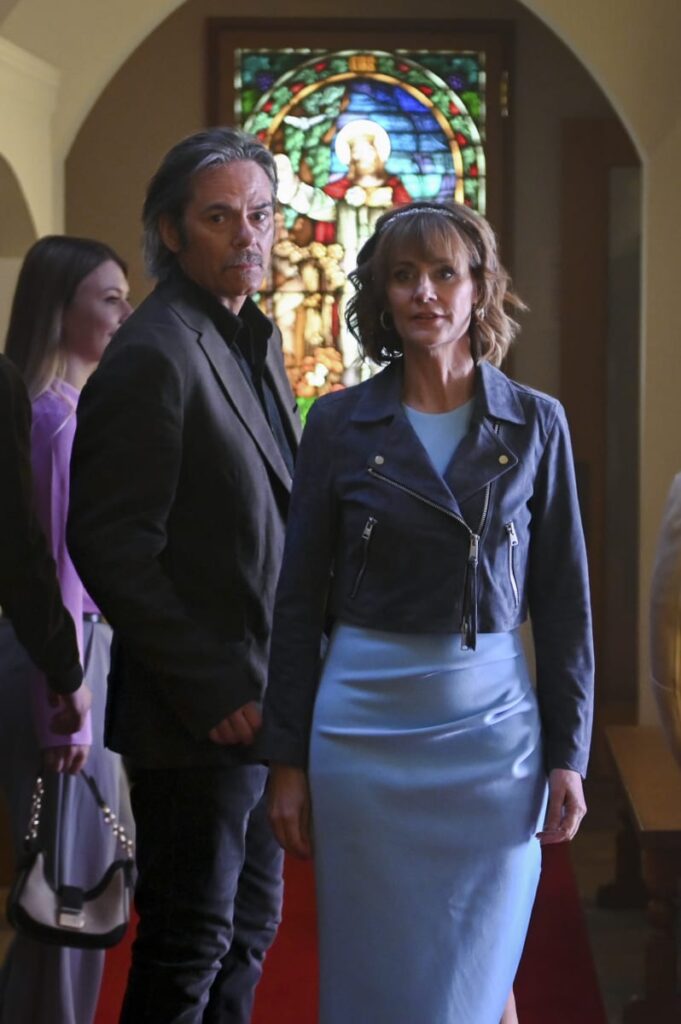For those of us who cover TV for a living, along with all the fans who have a particular affinity for broadcast TV shows, the fall lineup release is an exciting time of the year.
It certainly doesn’t hurt that the fall lineup is analogous to the holiday season. They arrive preceded by bewitching trailers and a healthy dose of anticipation, especially for resolving those cliffhangers.
Unfortunately, not all is well in the entertainment industry; the 2024 broadcast TV fall lineup broke records of the very worst kind.

Since the advent of streaming, we’ve all known that broadcast TV might be on its last legs, and this year is not a dissuasive one in that regard.
As per usual, the talking heads are proclaiming the official death knell of broadcast TV. And, perhaps, they are correct this time around.
Releasing the fewest scripted original series in roughly two decades certainly doesn’t bode well for the industry. Worse, it doesn’t bode well for the fans either, and the customer is always right.
Broadcast TV is Surprisingly Resilient
For starters, does anyone believe that broadcast TV, Fall or otherwise, doesn’t play second fiddle to streaming platforms? It’s not like no one saw this coming.
The thing is, broadcast TV has been around for so long that it was never going to slip away quietly in the night. Perhaps by the time 2030 rolls around, they’ll stop blaming the writer’s strike, and we can focus on the realities of the industry.
The writer’s strike certainly plays a role, though that role is arguably a very slim one at this point. The true nature of broadcast TV’s lethargic semi-demise is multifaceted.

It’s easy to blame the writer’s strike or the pandemic — easier than crunching numbers that indicate reality.
Honestly, the writer’s strike is just the latest example of “TV is dying” claims. When Netflix launched its streaming platform in 2007, the funeral rites for broadcast TV were written.
The iPhone was also the TV killer until it wasn’t. In other words, the scenery isn’t all that great for broadcast TV, but that doesn’t mean we are ready to write the obituary just yet.
With all of that being said, it’s difficult to say when or if linear TV will become a relic of history. Considering it, streaming isn’t the only innovation that represents a threat.
DVDs and Blu-rays, the web in general, social media, YouTube (along with Shorts, TikTok, Instagram, etc), streaming platforms, and smartphones are all damaging to the broadcast TV experience, even in the fall when all of the greats release.
Broadcast TV is still alive, like the Energizer Bunny of old. It just won’t go away.
Broadcast TV Fall Release Scripted Decline

The writer’s strike is long enough over that it’s no longer a legitimate excuse for an underwhelming fall release.
There is also no singular reason for the collapse. Most people only follow a handful (at most) of shows on broadcast TV and probably don’t even realize something is amiss.
Networks have vastly overestimated their value, are aggressively downsizing, are laying off thousands, are merging left and right and then overvaluing the merger, and appear to be in a constant state of reevaluation.
Only a handful of networks own the vast majority of channels. Yet, the level of organization is the equivalent of a chimpanzee trying to arrange algebraic equations in descending order of complication.
Did I mention the fact that the economy isn’t exactly singing along right now? Of course, these things are usually cyclical in nature, and there’s likely to be a rebound of sorts.
However, the rebounds are fewer and farther between and less extensive than the one before. In the meantime, streaming platforms have 99% of the culture wrapped around their fingers, and things are only looking up.

The Big Five networks are only releasing a shade over 40 scripted shows this year, a massive reduction in just a handful of years. The writer’s strike is an anomaly in the midst of this colossal belly flop.
ABC is the hardest hit, blaming an overall content chill within the market, last-minute scheduling changes, and a failure to secure any new deals. For ABC alone, that’s a 45% decline from its fall lineup just two years ago.
NBC’s show cancellations hurt, including Quantum Leap, Extended Family, Magnum P.I., and Le Brea. In the meantime, CBS is blaming production challenges, schedule changes, and reliance on vague, undefined contingency plans.
Is Broadcast TV Really Dead?
The Broadcast TV fall lineup aside, this question is probably the most repetitive of all. We seem to have a conversation about this three or four times a year these days.
Cost is certainly a prohibitive factor. I’ll give you a primary example. My dad is a boomer and, as such, often refuses to embrace today’s technology or use his debit/credit cards to pay for a monthly or annual subscription.

He currently pays $228/mo for DirecTV. Considering the fact that you can get everything DirecTV offers for roughly $60 to $80 on YouTubeTV, paying $228/mo is absolutely asinine. My stubborn dad aside, most people simply won’t do it.
Sure, you have to add another $40 to $60 for internet service, but the total is far less than DirecTV, especially if you stay on top of your streaming packages.
Instead of decreasing prices to compete with streaming platforms, prices experience periods of augmentation due to rising costs and fewer consumers left to spread out the bills.
In many ways, cable is merging with streaming, at least in terms of poor practices, such as increasing costs, inserting adverts, bundling, and less flexibility. But that’s a conversation for another time.
No, broadcast TV is not dead, and it’s likely to adopt a more innovative formula at some point. But there’s little doubt that the future of broadcast TV will no longer resemble what we are used to.
Television Networks are Withdrawing Content

Gravity is a fact of life. What goes up must come down.
The simple principle of physics applies to television as well. Once things peak, there is no other direction to travel. The broadcast TV fall lineup is nothing more than an example of this natural transition.
“I looked very extensively at traditional media. It was exhaustive in terms of our analysis. And ultimately, we concluded that … it’s not going to be a growth business, but it could become an important component to our ability to basically engage with the consumer.”
-Bob Iger
Viewership in broadcast TV is down across the board. The rise of streaming platforms is just one cause among many.
There’s rarely anything new anymore — just more of the same, microscopic tweaks to old and tired formulas and a proliferation of sports content (the lone thing on broadcast TV that consistently remains the most-viewed content).
If you’ve been paying attention, sports are also shifting to streaming platforms. As viewership continues its steady decline, more veteran favorites will bow out.
Once upon a time, reruns were a huge chunk of the overall business model.
Now, there’s a shift to reality (unscripted) TV as people can get their rerun fix by binge-watching every season on their favorite streaming platform.

Reality TV and sports events are simply cheaper to produce, with both outshining the old rerun model and scripted series.
At some point, we’ll have to come to terms with this and move on to the next big thing.
What do you think about the Fall lineup? Did it seem more diminished to you personally?
Let us know in the comments!
The post Why Broadcast TV’s Fall Lineup Is Historically Bad appeared first on TV Fanatic.